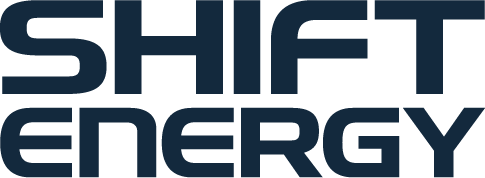About
Our customers want to get the best out of their central plants. In mission critical environments, that means maximizing reliable production, with fewer operational surprises that lead to emergency repairs or unplanned downtime: in areas with high electricity costs, it means reducing their energy use, and in areas where water supplies are under stress, reducing evaporative water loss. We help our customers achieve all three of these goals – at once – with SHIFT EOS – the world’s most advanced measurement & control technology for central plants. With EOS, our customers get more stable, predictable performance and sustained, verifiable increases in energy and water efficiency.
What’s more – SHIFT EOS gives customers continuous measurement of the hydraulic and thermodynamic performance of their plants and of each piece of equipment –data that has never before been available outside the lab.
How We Do It
Since 1990, chiller plant equipment has advanced steadily, with the introduction of variable speed equipment and improved refrigerants and materials resulting in more reliable chillers and 30-40% gains in chiller COPs. In contrast, control technology has lagged behind. While several “black box “optimization systems have been introduced, they make control moves based on rough approximations and rules of thumb that work well sometimes but overall have failed to deliver the promised results, leading many in the industry to conclude that only a new control paradigm can deliver real progress.
That new paradigm is Model Predictive Control (MPC). First proven in process industries like semiconductor and petrochemical manufacturing where reliability and efficiency are non-negotiable, MPC forecasts plant behavior hours ahead, evaluates thousands of possible control moves, and applies the ones that maximize stability and efficiency.
Now, SHIFT has removed the long-standing barriers to MPC in central plants — cost, complexity, and lack of standardization. EOS is a configurable MPC that accommodates any chiller plant layout: EOS virtually eliminates common stability problems like chiller surge and trip, decoupler flow reversals and control oscillations.
With EOS, equipment loads are generally reduced except when the plant is fully loaded, yielding typical annual energy savings of 20% and water savings of 10-20%, depending on factors like the plant’s load profile and the climate where the plant is located.
The SHIFT Difference
Most central plants today still run on reactive, rules-based controls — systems that respond to conditions after they change, an approach that can lead to instability, waste energy and drive excess water use. Many so-called optimization tools have tried to fix this with heuristic “black box” logic, but the results have been inconsistent and difficult for operators to trust. SHIFT takes a fundamentally different approach. At the core of EOS is a predictive digital twin, a data-driven model of the plant that also delivers engineering-grade thermodynamic and hydraulic measurements in real time. EOS makes Model Predictive Control practical for central plants, without the cost and complexity of custom coding.
Because EOScool can be configured quickly for any plant, our customers gain access to actionable engineering-grade insights in a matter of weeks, and full predictive control about a month later. They see what was previously invisible — how much chilled water the plant is producing, kW/ton metrics, engineering-grade metrics on every component, and how the system will behave hours ahead. The result is measurable outcomes: more stable operation, reduced equipment stresses, and double-digit reductions in both energy and water use. Our difference is simple: we combine advanced technology with a commitment to delivering sustained, transparent results that operators and engineers can trust.
What Sets Us Apart
Predictive Digital Twin – real-time, engineering-grade measurements of thermodynamics and hydraulics.
Practical Model Predictive Control – no custom code, fast deployment in weeks, not years.
Transparency, not a black box – operators see and understand every control decision.
Proven results – more stable plants, reduced equipment stress, and double-digit energy and 10–20% water savings.
